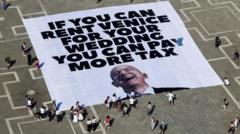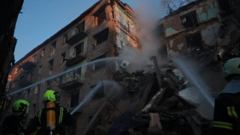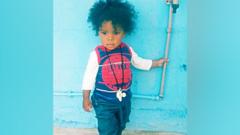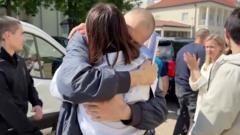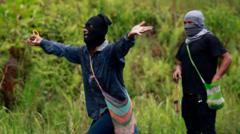In a wave of demonstrations marking the anniversary of last year’s protests, at least eight people have been reported killed and hundreds injured in clashes across Kenya. Protesters demand the resignation of President William Ruto, signaling widespread discontent with his administration.
Kenya Erupts in Protests as Citizens Demand Leadership Change
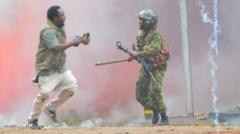
Kenya Erupts in Protests as Citizens Demand Leadership Change
Renewed unrest in Kenya as thousands protest against President William Ruto, resulting in deaths and injuries amidst police confrontations.
In Kenya, unrest erupted across multiple cities as thousands of protesters took to the streets to voice their frustrations against President William Ruto’s government. The protests, coinciding with the anniversary of significant anti-government demonstrations from the previous year in 2024, resulted in at least eight fatalities and over 400 injuries. Eyewitness accounts reveal chaotic scenes in Nairobi, where police deployed tear gas and water cannons in response to demonstrators chanting "Ruto must go," while waving branches as symbols of peaceful opposition.
As the situation escalated, the Kenyan government imposed a ban on live media coverage of the protests, a decision swiftly overturned by the High Court in Nairobi. Despite Ruto's appeals for calm at a burial ceremony in Kilifi, tensions heightened as protesters attempted to advance towards State House but were met with barricades and heavy police presence.
The Kenya Medical Association, along with other advocacy groups, reported that out of an estimated 400 injuries from the protests, eight individuals suffered gunshot wounds, necessitating specialized medical attention. Amnesty Kenya assessed the death toll to be potentially higher, estimating at least 16.
Amidst the chaos, voices of the protesters echoed a longing for change. Demonstrator Amina Mude expressed deep concern for the future, particularly regarding education and governance in the country. Video footage from Nairobi captured the haze of tear gas, as crowds sought refuge and expressions of grief lined the streets, commemorating last year’s tragic events, further intensifying the calls for accountability and reform within Kenyan leadership. As the protests unfold, the national discourse continues to grapple with the demands for political accountability and the preservation of public safety in the face of unrest.
As the situation escalated, the Kenyan government imposed a ban on live media coverage of the protests, a decision swiftly overturned by the High Court in Nairobi. Despite Ruto's appeals for calm at a burial ceremony in Kilifi, tensions heightened as protesters attempted to advance towards State House but were met with barricades and heavy police presence.
The Kenya Medical Association, along with other advocacy groups, reported that out of an estimated 400 injuries from the protests, eight individuals suffered gunshot wounds, necessitating specialized medical attention. Amnesty Kenya assessed the death toll to be potentially higher, estimating at least 16.
Amidst the chaos, voices of the protesters echoed a longing for change. Demonstrator Amina Mude expressed deep concern for the future, particularly regarding education and governance in the country. Video footage from Nairobi captured the haze of tear gas, as crowds sought refuge and expressions of grief lined the streets, commemorating last year’s tragic events, further intensifying the calls for accountability and reform within Kenyan leadership. As the protests unfold, the national discourse continues to grapple with the demands for political accountability and the preservation of public safety in the face of unrest.








